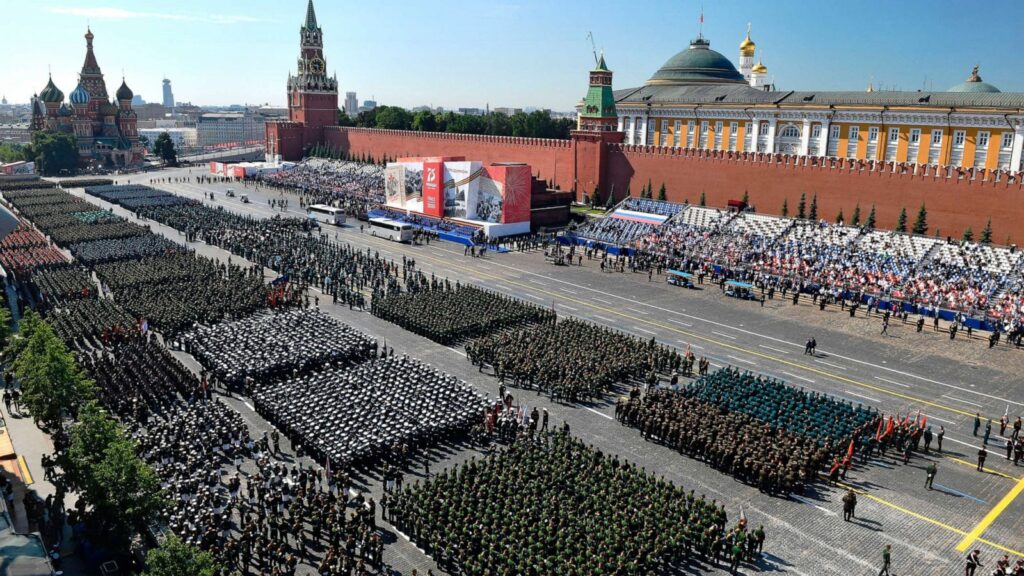The global landscape of warfare has witnessed a significant transformation with the emergence of the new Russian way of war. Evolving from traditional military doctrines, Russia has adopted innovative strategies and advanced technologies to enhance its combat capabilities. This article aims to shed light on some key aspects of this new approach, including Battalion Tactical Groups, siege tactics, armed helicopters, kamikaze drones, and hypersonic missile strikes.
Battalion Tactical Groups: The Building Blocks of Russian Warfare
At the heart of the new Russian way of war are Battalion Tactical Groups (BTGs). These small combined arms units, roughly the size of a battalion, possess long-range offensive capabilities and formidable firepower. A typical BTG comprises four motor rifle companies, two tank companies, two artillery companies, two rocket artillery companies, and one tactical air defense (AD) company, often armed with Pantsir and sometimes Tor systems. This configuration ensures a potent mix of infantry, armor, artillery, and air defense assets,at tactical level itself, capable of conducting diverse combat operations and enabling robust trip wire defence tactics.The BTGs now also seem to have the ability to merge and form their parent brigades when enabling a flexible switching from small unit to large conventional unit tactics when situation demands
Siege Tactics: The Art of Surround and Pound
Russia’s use of siege tactics has proven highly effective in recent conflicts. When encountering enemy strongholds, Russian forces employ a strategy of surrounding and bombarding the target with artillery fire. This approach, coupled with the use of surveillance drones, enables precise correction of tank and artillery fire, increasing the effectiveness of the assault. Meanwhile, tanks are utilized to ambush supply and evacuation routes, further weakening the enemy’s defenses.Russian tanks like T90AM/M and T72B3/B4 also posses the ability to fire cannon launched guided missiles and guided shells like sokol m upto 12 km away coupled with drones correcting fire and pointing targets, it’s a deadly combination.
Armed Helicopters: Swift and Deadly Hunters
Armed helicopters, such as the Ka-52 and Mi-28, play a crucial role in the new Russian way of war. These formidable aerial platforms are utilized to hunt armored vehicles, artillery units, and moving columns. With their ability to deliver precision strikes and initiate combined arms attacks, armed helicopters significantly enhance the overall operational capabilities of Russian forces. They provide real-time situational awareness, enable rapid target engagement, and offer enhanced mobility to ground forces.Of particular importance in this is the Ka-52 with its ability to look far and engage long distance targets owing to its modern sensors and recon abilities
Kamikaze Drones: Unleashing Overwhelming Force
One of the striking features of the new Russian way of war is the extensive use of kamikaze drones. These unmanned aerial vehicles (UAVs) are not only employed against stationary targets but also have the capability to target moving armor, radar installations, and overwhelm enemy air defenses. Kamikaze drones provide a cost-effective means to neutralize enemy assets with precision, agility, and a reduced risk to Russian forces. Their ability to saturate the battlefield with multiple threats simultaneously adds a new dimension to modern warfare.The cheaper costs of say geran or lancet also makes the use of much expensive AD missiles futile in the long run.This exhausts the enemy AD and makes the enemy vulnerable to other form of strikes like Aerial bombing and cheaper missile strikes that are not Supersonic or hypersonic
Hypersonic Missile Strikes: Rapid Precision and Neutralization
Russia’s deployment of hypersonic missiles has revolutionized its ability to strike high-value targets and neutralize long-range air defense systems. These missiles travel at speeds exceeding Mach 5, making them extremely difficult to intercept. Hypersonic missile strikes allow Russia to swiftly degrade an adversary’s defenses, enabling follow-on operations with reduced risks. By neutralizing key nodes of enemy command and control, as well as long-range air defense assets, Russia gains a significant advantage in the early stages of a conflict.
Conclusion
The new Russian way of war represents a paradigm shift in modern warfare, combining advanced technologies, innovative tactics, and a potent mix of combined arms units. Battalion Tactical Groups, siege tactics, armed helicopters, kamikaze drones, and hypersonic missile strikes are key elements of this new approach. Russia’s emphasis on precision, speed, and overwhelming force allows it to assert its military dominance on the battlefield. As this new way of war continues to evolve, it will undoubtedly shape the future of warfare, influencing military strategies and doctrines worldwide.
